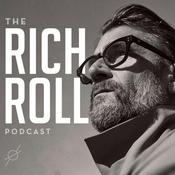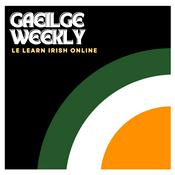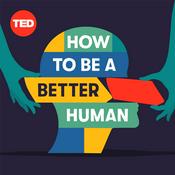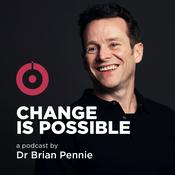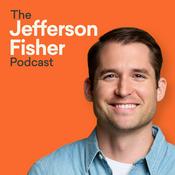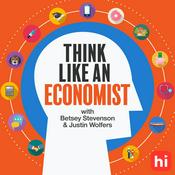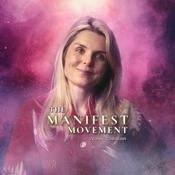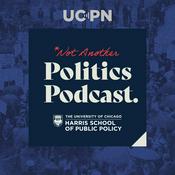Available Episodes
5 of 207
- How Wearable Tech Will Heighten Our Senses and Abilities, with Pedro LopesCan you imagine a world in which a wearable device, like a smartwatch, could move your fingers to strum the guitar or play the drums? That kind of technology is part of the innovative research coming out of the Human-Computer Integration Lab at the University of Chicago, led by renowned computer scientist Pedro Lopes. His lab is developing a new generation of gadgets that use haptics (or tactile sensations like the buzz of your smartphone) to move your body, replicate your sense of smell and even make you feel things.In this episode, Lopes explores the potential of wearable devices to transform our future as well as brain-computer interfaces that are being developed by companies like Elon Musk’s Neuralink that directly into the body. Hosted by Simplecast, an AdsWizz company. See pcm.adswizz.com for information about our collection and use of personal data for advertising.--------38:17
- Why Are More Women Saying No To Having Kids? With Peggy O'Donnell HeffingtonMore and more women in the United States are saying no to motherhood. In 2023, the U.S. fertility rate reached the lowest number on record. But the idea of non-motherhood is actually not a new phenomenon, nor did it come out of the modern feminist movement. For centuries, women have made choices about limiting births and whether or not to become mothers at all. This history is documented in a new book, "Without Children: The Long History of Not Being a Mother," by University of Chicago Assistant Instructional Professor Peggy O'Donnell Heffington.Heffington writes about the historic trends of non-motherhood as well as the modern factors that are playing a role in women's choices to not have children today — from lack of structural support in the workplace, to a national law for paid maternity leave, and the sheer lack of affordability. She writes that if these trends continue, American millennials could become the largest childless cohort in history. Hosted by Simplecast, an AdsWizz company. See pcm.adswizz.com for information about our collection and use of personal data for advertising.--------32:04
- How Full-Body MRIs Could Predict Your Long-Term Health, with Daniel SodicksonWhat does it mean to see beneath the surface — of the human body, the brain, or even the universe itself? In his new book, The Future of Seeing: How Imaging Is Changing Our World, Prof. Daniel Sodickson of NYU explores the future of imaging: How technology is transforming not just medicine, but our very ways of perceiving the world. With the rise of AI-driven “digital vision,” Sodickson, a pioneer of MRI innovation, argues that imaging is no longer just a diagnostic tool — it’s becoming a new language of discovery.In this conversation, Sodickson explores the promises and pitfalls of this promising new technology. Reflecting on the history of scientific discovery, we examine what the next generation of imaging might reveal about life itself. Hosted by Simplecast, an AdsWizz company. See pcm.adswizz.com for information about our collection and use of personal data for advertising.--------34:43
- Is There Such A Thing As A Psychopath?Few ideas have gripped the public imagination quite like the idea of the “psychopath.” From Hollywood thrillers to true-crime podcasts, popular culture has led us to believe that psychopaths are dangerous and biologically distinct from the rest of us. But what if almost everything we think we know about them is wrong?In this episode, we talk with Rasmus Rosenberg Larsen, an Assistant Professor of Forensic Epistemology at the University of Toronto and author of "Psychopathy Unmasked," whose research is challenging the very foundation of psychopathy as a diagnosis. Larsen explains how the term “psychopath” is relatively new, dating to the Ted Bundy trial in the 1970s, and how TVs and movies have skewed our understanding of the “psychopath.” He discusses psychopathy tests, their impact on the criminal justice system—and what the latest science reveals about the minds we’ve long misunderstood. Hosted by Simplecast, an AdsWizz company. See pcm.adswizz.com for information about our collection and use of personal data for advertising.--------35:55
- Why We Haven’t Solved Brain Disorders—And How To Fix It, with Nicole RustFor decades, neuroscience has promised breakthroughs in treating conditions like depression, schizophrenia, and Alzheimer’s. Yet despite powerful technologies and billions invested, progress has been frustratingly slow. Why?On this episode of Big Brains, we talk with Nicole Rust, neuroscientist at the University of Pennsylvania and author of Elusive Cures. Rust argues that the traditional “domino” view of the brain—where one broken piece can simply be fixed—has held us back. Instead, she says we need to embrace the brain’s true nature: a complex, dynamic system more like the weather than a machine.We explore why treatments so often fail, what makes mood such a scientific mystery, and whether a new era of brain research—powered by models, feedback loops, and fresh ways of thinking—can finally deliver the cures that have long eluded us. Hosted by Simplecast, an AdsWizz company. See pcm.adswizz.com for information about our collection and use of personal data for advertising.--------36:18
More Education podcasts
Trending Education podcasts
About Big Brains
Big Brains explores the groundbreaking research and discoveries that are changing our world. In each episode, we talk to leading experts and unpack their work in straightforward terms. Interesting conversations that cover a gamut of topics from how music affects our brains to what happens after we die.
Podcast websiteListen to Big Brains, What the Focal!? and many other podcasts from around the world with the radio.net app
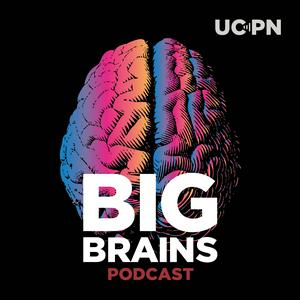
Get the free radio.net app
- Stations and podcasts to bookmark
- Stream via Wi-Fi or Bluetooth
- Supports Carplay & Android Auto
- Many other app features
Get the free radio.net app
- Stations and podcasts to bookmark
- Stream via Wi-Fi or Bluetooth
- Supports Carplay & Android Auto
- Many other app features


Big Brains
Scan code,
download the app,
start listening.
download the app,
start listening.
